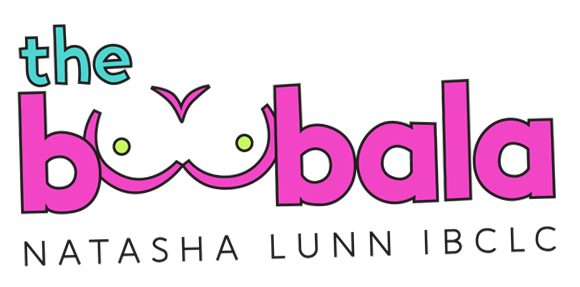Page Content
- Will pumping every 2 hours increase milk supply?
- What if I accidentally go 5 hours without pumping?
- What is the minimum amount of breastmilk that is beneficial?
- How much milk production in the first week?
- How long do breasts take to refill?
- How much breast milk should I be producing at 1 week?
- What is the 5 5 5 rule for breast milk?
- How many ounces is 20 minutes of breastfeeding?
- Does pumping every 2 hours increase milk supply?
- How quickly do breasts refill?
Understanding Breast Milk Production in the First Week
Breastfeeding is a vital aspect of infant nutrition, and the first week after birth is particularly crucial for establishing a healthy milk supply. During this period, mothers typically produce a special type of milk known as colostrum, which is rich in nutrients and antibodies essential for the newborn’s immune system.
Colostrum: The First Milk
In the initial days following delivery, a mother’s body produces colostrum, which is thick and yellowish. This nutrient-dense fluid is produced in small quantities, usually around 5 to 10 milliliters (about 1 to 2 teaspoons) per feeding during the first few days. Colostrum is packed with proteins, vitamins, and minerals, making it the perfect first food for infants, who have tiny stomachs and require concentrated nutrition.
Transition to Mature Milk
Around day 3 to 4 postpartum, mothers typically experience a significant increase in milk production, often referred to as “milk coming in.” This transition marks the shift from colostrum to mature breast milk, which is more abundant and has a different composition, providing the necessary hydration and energy for the growing infant. By the end of the first week, mothers may produce anywhere from 300 to 500 milliliters (about 10 to 17 ounces) of milk per day, depending on various factors such as the baby’s feeding frequency and the mother’s overall health.
Factors Influencing Milk Production
Several factors can influence the amount of breast milk produced in the first week. Frequent breastfeeding or pumping helps stimulate milk production, as the breasts operate on a supply-and-demand basis. The more the baby feeds, the more milk is produced. Additionally, maternal health, hydration, and nutrition play significant roles in establishing a robust milk supply.
Conclusion
The first week of breastfeeding is a critical time for both mother and baby. Understanding the dynamics of colostrum and the transition to mature milk can help new mothers navigate this period with confidence. By ensuring frequent feedings and maintaining good health, mothers can support their bodies in producing the necessary milk to nourish their newborns effectively.
Will pumping every 2 hours increase milk supply?
Pump more often, from both breasts
Many women wonder how often they should pump. A general guideline is to pump every three hours. But if you’re trying to produce more breast milk, you can: Try pumping both breasts for 15 minutes every two hours for 48-72 hours.
What if I accidentally go 5 hours without pumping?
If the decrease in feedings or pumping sessions results in long stretches without milk removal our bodies respond by slowing milk production. It is generally best to avoid stretches longer than 5-6 hours without breastfeeding or pumping for at least the first 4-6 months.
What is the minimum amount of breastmilk that is beneficial?
In fact, there is some research that indicates that even as little as 50 ml of breastmilk per day may help prevent disease in breastfed babies. Additionally, our body recognizes the importance of this protection and increases the concentration of SigA as our milk supply begins to decrease.
How much milk production in the first week?
How much milk a baby needs each day, and thus how much a mom ideally produces.
| Day of Life | Milk volume 30mL = 30cc = 1oz |
|---|---|
| Day 0 Day 1 Day 2 | ~1oz per day |
| Day 3 Day 4 | ~8oz per day |
| Day 5 Day 6 Day 7 | ~12 – 20oz per day |
| Day 8 – 14 | ~20 – 24oz per day |
How long do breasts take to refill?
Milk is actually produced nonstop—before, during, and after feedings—so there’s no need to wait between feedings for your breasts to refill.
How much breast milk should I be producing at 1 week?
Mothers of well babies born at term produce 500- 600mls of breast milk every 24 hours toward the end of the first week. Mothers of preterm infants need to have 500–700mls by day 7 to ensure there will be enough milk when the baby is older and ideally 750–800 mls by the end of the first two weeks.
What is the 5 5 5 rule for breast milk?
Something I recommend to moms is the 5-5-5 rule. Try and use milk within five hours at room temperature, five days in the fridge, and by five months in the freezer.
How many ounces is 20 minutes of breastfeeding?
Average Milk Supply
If you pump within 15-20 minutes of completing a breastfeeding session, you will probably get one to two ounces combined.
Does pumping every 2 hours increase milk supply?
Pump more often, from both breasts
Many women wonder how often they should pump. A general guideline is to pump every three hours. But if you’re trying to produce more breast milk, you can: Try pumping both breasts for 15 minutes every two hours for 48-72 hours.
How quickly do breasts refill?
To put a number on it, it usually takes about 20 to 30 minutes after feeding to generate enough milk for your baby, and about 60 minutes to replenish fully. The more often your baby feeds, and the more they empty your breasts, the more milk your body will produce.

